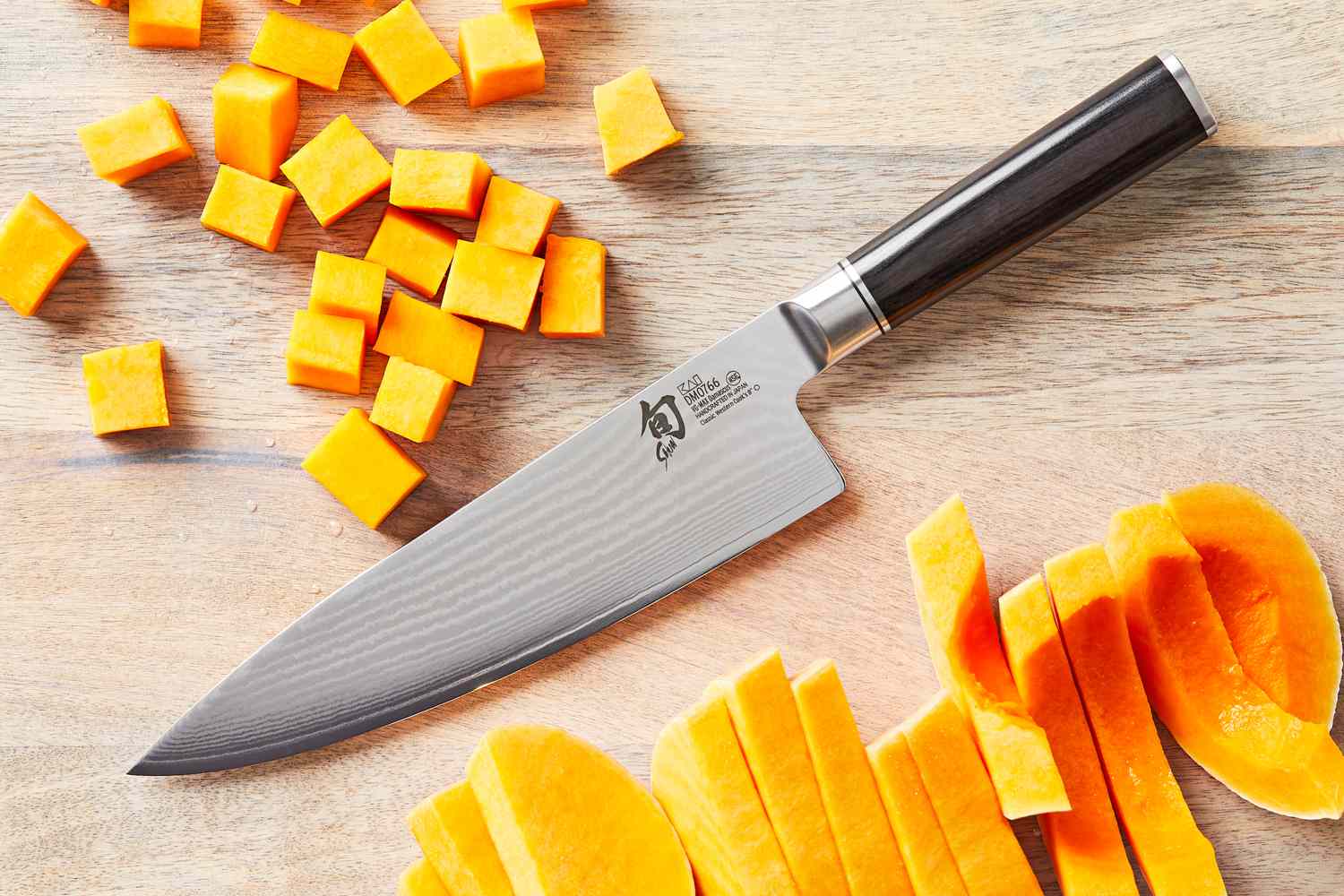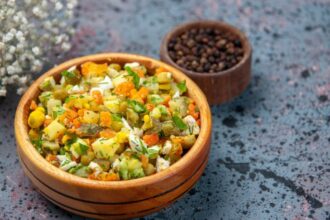Slice an onion, rock it a few times, then wonder why prep suddenly feels like fun. A chef knife that behaves can flip the mood of an entire kitchen shift-almost like magic. Yet chatter around the block keeps circling back to one argument: simple stainless blade or the showy grooves of Damascus.
Pro cooks swear by the smear-free easy-care alloy, while home kitchen rookies clutch at the layered eye candy and worry about rust. Each side boasts a laundry list of pros and cons, and truth is, neither group has declared a universal champion. This post digs into the science, history, grind profiles, and even how classic Japanese wa-bocho slip into the picture. Tomorrow morning, when the water stones start humming, maybe the choice will feel a notch clearer.
What Is Stainless Steel, What Is Damascus Steel?
Stainless blades marry iron with chromium and nickel, then get polished until fingerprints slide off like raindrops. Damascus, by contrast, layers several steels-never the same recipe twice-and forges them under heat that would make humble frying pans blush. The result can look like tree bark or fish scales or spilled ink, and those patterns whisper a pedigree going back centuries to Middle Eastern swordsmiths.
What Are Stainless Steel Knives?
Stainless steel forms when iron meets just the right pinch of carbon and a generous dose of chromium. That chromium cloak fights off rust, so a well-cared-for japanese knife wanders the kitchen without leaving spots. Most home cooks grab a stainless blade because it shrugs off daily dings, is easy to wipe down, and never pretends to be fancy.
Key Features of Stainless Steel Knives
* Shrugs off rust and pesky stains
* Simple upkeep, just a quick wash
* Affordable, so it wont break the budget
* Tough enough to endure a busy shift
What Are Damascus Steel Knives?
Damascus steel tells a different story. Blacksmiths fold several steels on themselves like a secret letter, weld the layers, and hammer until rippled patterns appear-all before the knife ever touches a carrot. Many sushi pros in Japan swear by it, praising the way it holds an almost surgical edge while looking like a mural in motion.
Key Features of Damascus Steel Knives
* Keeps a surgical edge far longer
* Blade surface displays one-of-a-kind ripples
* Usually forged by hand, so every piece is personal
* Delicate balance that glides through food
Comparing Stainless Steel Vs. Damascus Steel Chef Knives
Apples to apples, choosing between these two often boils down to routine. Stainless blades handle rough treatment with a shrug, while Damascus rewards careful, confident cuts. One is workhorse and the other, maestro, yet both can mince garlic, chop herbs, and slice protein at dinner time.
1. Durability
Pick up a good stainless-steel knife and you immediately notice its workhorse vibe. The chromium baked into the mix stops rust in its tracks, even when the blade sits in a damp sink overnight. For chefs who care more about chopping time than shiny display cabinets, that kind of toughness pays for itself.
A Damascus knife also laughs off everyday abuse, yet its layered high-carbon heart requires an attentive owner. Gloves, oil, and the occasional panic wipe help keep pitting at bay. Durable? Absolutely. Care required? Plenty.
Winner: Stainless steel-easy to love, harder to ruin.
2. Edge Sharpness and Retention
Lay a freshly honed Damascus blade beside the dinner-board onions and you hear a crisp pop, like paper under a thumb. The way its curved layers lock together lets you wrench the edge into nearly-hair-fine geometry and hold it there long enough to slice through bamboo. Serious precision fiends swear by Japanese Damascus for that very reason.
A premium stainless-steel kitchen knife can still arrive out-of-the-box hair-splitting, yet the edge fades sooner and begs for steel. Frequent touch-ups deliver performance, but the grinding wheel never sleeps.
Winner: Damascus steel-ultimate sharpness for those who measure in microns.
3. Ease of Maintenance
Speaking practically, stainless steel blades do not ask much of their owners. A quick scrub with dish soap and hot water is pretty much the whole maintenance routine, and they shrug off rust with commendable ease.
Damascus edges, in contrast, demand attention if you want them to survive a busy prep session. You wipe the blade immediately, pat it dry to chase away moisture, and then seal the surface with a whisper-thin coat of oil. That extra step can feel like one chore too many for the home cook, yet its fans swear the effort pays dividends in performance and character. For straight-up convenience during weeknight dinners, stainless steel has the clear edge.
4. Aesthetic Appeal
Put a Damascus knife on the table and the blade steals the spotlight with its swirling, water-like pattern. People will pick it up, turn it in the light, and claim theyve never seen anything quite like it. The tool behaves like functional art-and, whether you mean to or not, it sparks conversation. Stainless steel offers a look that is tidy and somewhat clinical by comparison, all smooth lines and reflective surfaces. Those minimalist charms go unnoticed next to the showy drama of a well-forged Damascus edge. Winner: Damascus steel; the blade is scenery all by itself.
Price
The sticker shock can switch a shopper from excited to cautious in seconds. Plain stainless steel knives keep the worry in check-steady quality at steady prices. A cook on any budget can pick a decent model without spending a mortgage payment.
By contrast the swirl-patterned steel of damascus commands respect and cash. A single blade often costs more than an evening out, yet for devotee its pound-of-flour heft is pure bragging rights. Add glowing reviews and the math shifts from cold numbers to hot passion.
Winner: stainless steel because the wallet stays whole.
Why Japanese Kitchen Knives Are a Special Case
Japanese makers follow rules that send Western eyes sideways. Blades are lighter, edges leaner, and balance sits a fingertip closer to the handle. Models such as gyuto or santoku truck through onions, fish, and feeling like nothing at all. Even the cut sounds sharper.
Art meets steel in every akio or toji, and most people pay for the show. Caring for that edge-scouring moisture, polishing rust-can test even patient hands. Still the combination of craft and cut keeps chefs reaching for those higher bills.
Picking the Right Knife for Your Work
Every cook sooner or later faces the stainless-versus-Damascus debate, and the answer almost always comes down to personal taste. Think of it this way: a well-forged stainless blade needs little more than a scrub after dinner; it stays sharp plenty long and wont dent your pocketbook. Chefs who crave the show-stopping waves etched into Damascus steel gladly put in the extra care for the sheer beauty and edge-holding grit that style offers.
Arm yourself with the best chef knife and ordinary chopping suddenly feels like slicing butter. Whether youre a pro chef clocking long shifts or a weekend grinder prepping a Friday-night feast, the right shape in your hand changes everything. A first-rate blade lifts technique, shortens prep, and, oddly enough, makes the kitchen smell more like victory. Pick your favorite from our hand-picked roster, which now includes Japanese kiritsuke, gyuto, and a handful of boutique makers no one else stocks. A single good knife, premium or otherwise, is the quickest way I know to upgrade your daily cooking ritual.

















